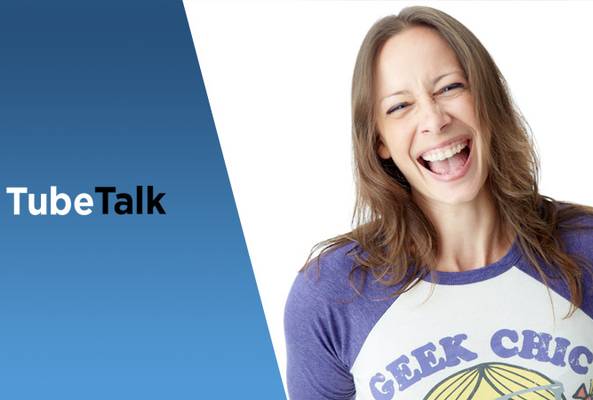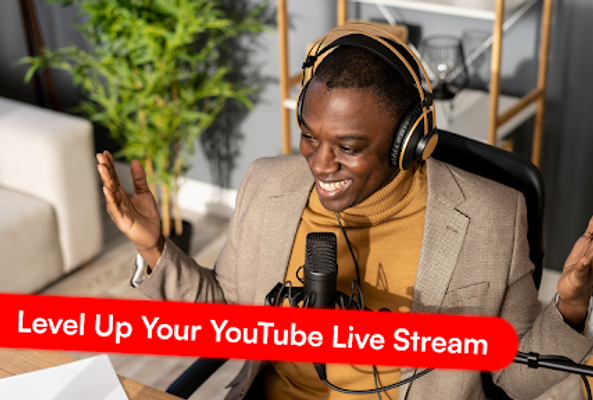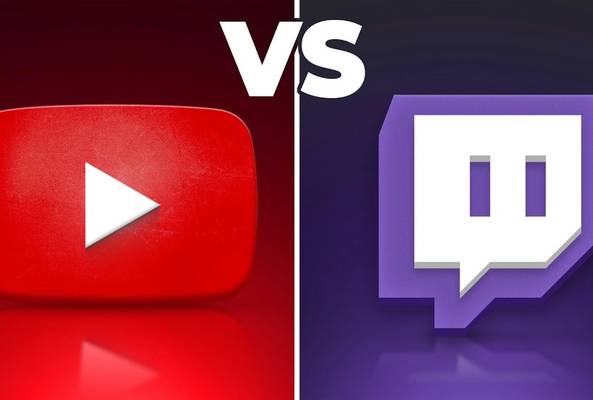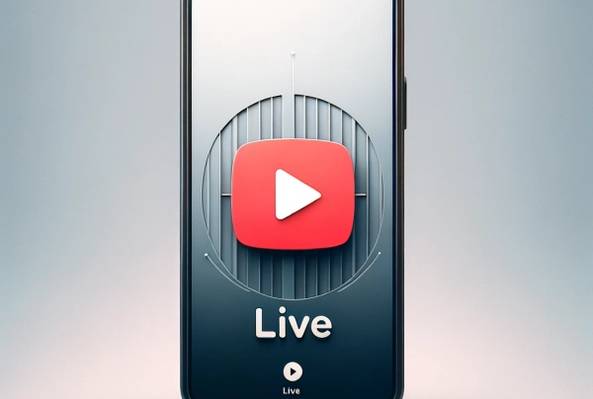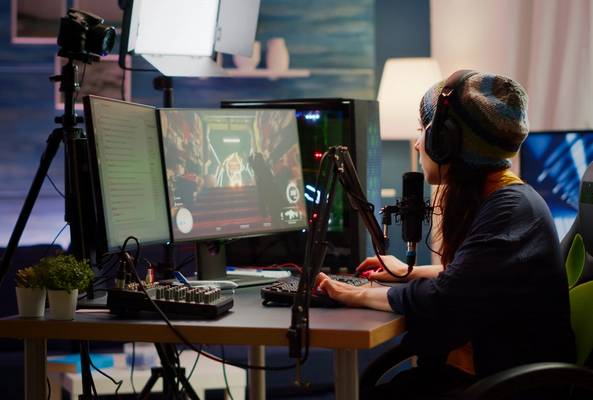Liron Segev, aka TheTechieGuy, is the Director of Customer Success at vidIQ, an internationally celebrated Digital YouTube Strategist working with some of the largest brands and YouTube influencers in the world. Over the past 20+ years, his work has taken him to South Africa, the UK, and the US where he frequently speaks at conferences and provides expert tech commentary for various print publications, radio, and TV while actively running his Tech YouTube Channel.
How to Choose the Best Microphone for YouTube Videos: TubeTalk 179 with Shure
When it comes to video, viewers will put up with a lot such as shaky camerawork, and bad lighting, but bad audio is just way too frustrating. If the sound if off, the viewer will be quick to give up and simply move on to the next video. But creating better audio is an art form in itself, and a brand-new language for creators to learn. Understanding terms like cardio, patters, and gains is just the start of understanding this technology so we can buy and set up the right equipment.
Welcome to this week’s episode of TubeTalk where we are going to break down all your audio requirements. So, where do you start? When you look online, equipment is either really, really cheap or really, really expensive with everything in-between. So, how do we know what to get, and more importantly, how do we get the right microphone that's going to do the job for the application that we want?
We’re joined by Laura Davidson, the Marketing Development Specialist at Shure, and she is here to give us all of the answers of every possible question we've ever asked about mics. Laura Davidson has been in the audio industry for over 13 years and has honed her skills as a product demonstrator, specialist, marketer and singer/songwriter. In this podcast you will learn:
Stop Guessing. Start Growing.
Join 20M+ creators using vidIQ to get more views, subscribers, and success on YouTube.
- Why and how mics differ depending on exactly what you need them to do
- The difference between a cardioid and an omni-directional mic
- Why you might choose dynamic mic over condenser mic
- The right mic for changes in broadcast frequency and bandwidth

Subscribe to TubeTalk: The Video Marketing Podcast!
TubeTalk has been informing video creators and marketers since 2014, and is one of the most respected and listened to podcasts in the online video industry. Subscribe today so you never miss an episode! You can find vidIQ's TubeTalk at:
How to Choose the Right Microphone for Creating YouTube Videos: Full Transcript
Liron Segev: Laura, welcome to TubeTalk. Can you give us like a two-second overview. Where do you fit into the picture with Shure? Who is Shure?
Laura Davidson: So, Shure has been around for 94 years, so a little bit of time. We've always been a U.S.-based company. We're based outside of Chicago, and got our start in broadcasting and PA systems when they started to get too big for people to be heard on like stages and venues got too big.
We made mics that actually amplified people without feeding back horribly, so that was kind of what we became known for. We've since gone on to create some of the most legendary microphones that you've seen. Elvis used our mics! Our SM58is kind of our industry standard dynamic vocal microphone. And so, we make that, but we also make wonderful other things for podcasters and content creators and people who like to listen to music. We make headphones and earphones. Not many know that. So, my job is to kind of go out into the world and tell people about the brand who might not be familiar, and those who are, let them know that we make a full range of other cool things.
Liron Segev: Okay. So now, let's put ourselves in the driver's seat. I know I need better audio. Okay. I've listened. I've heard you. You've convinced me, but where do I even start? Because I see on your website, you've got this little wizard at the top saying, "Hey. What do you want your mic for?" Is there really such a difference in the mics depending on what you're going to be using them?
Laura Davidson: There's a few things to take into consideration. The application is where you want to start, which is why we made our website the way that it is, where you can say, "Okay. I'm going to be using it in performance and production, voice or speech or with an instrument. Each one of those applications is going to require a different type of mic, and we make microphones that can capture several different types of things.
We also have a podcast mic option if you want something that is going to be able to capture the human voice very well, so the frequency response is going to be nice and tailored for that. And we can get into that in a bit because that's a little geeky.
But, if you know that you want to use a mic for speech, you want something that's not going to have, especially for podcasting, not a lot of plosives, so those Ps coming through. And so, what I'm talking through right now is something called the SM7B, and you're talking through one as well, I believe.
And it's a microphone that's been around since the '80s. Michael Jackson recorded Thriller on this microphone. And here we are today still using it because it's got this amazing response that captures the details and richness of pretty much everyone's voice. It's kind of insane, actually.
Liron Segev: The application is critical. So, if I know I'm going to be recording music, or different things. If I'm going to be recording just purely us chatting, that's the application. If I'm going to be recording my YouTube video clips and maybe I'm mobile, well, that's a different mic altogether.
Laura Davidson: Yes.
Liron Segev: So, do we have to start with what? Basically, asking ourselves the question, "What's the primary usage of this mic?"
Laura Davidson: Yes. That's a great place to start.
Liron Segev: Okay. So, assuming I now know that, so let's say I want to capture lots of audio, but I don't want all this background music. I'm going to be doing it on the go. So, I'll be at events, and you know events are buzzing with Wi-Fis, and everybody else's chat, and lots of noise. How do I make sure that I'm going to be able to capture the person I'm interviewing or me doing my vlogging style? I believe that there is some sort of patterns I need to look out for?
Laura Davidson: Yes. So, the polar patterns are what that's called, and we have some great videos that you can go online and find just about mic basics. But, essentially the polar pattern is how the microphone picks up the signal - the cardioid pickup pattern is the most common, and it’s called cardioid because it's shaped like a heart. So, think cardio.
That particular mic is directional, so what that means is it's not going to pick up all things coming into it. It's going to pick up what's coming into the front of the mic. But once you go off axis or behind the mic, it's not going to pick up. So, that one's really great for doing things like this where we're talkinrectly into the mic, not moving around a lot, but it's also great for stage use because it's so directional. It's not going to pick up the band or the ambient sound as much as something like an omni-directional mic, which picks up as omni implies, all around or everything.
You have to take that into consideration so that you know how close you're going to be micing your source. That's the second thing to taken into consideration. After you figure out what you're going to use it for, you figure out how you're going to use it in the field or based on the source that you're using it on, how close you need to get to it.
The most common is your cardioid mic, and then omni-directional is typically used in a lavalier mic, which is one that you would clip onto your shirt to do interviews.
You use omni-directional lav mics for interviews or in a theater setting for instance. We make a cool series called TwinPlex, which just came out, which everyone should Google if you're using any sort of micing any sort of theater applications. It's unbelievable.
But there's also super cardioid, which is an even tighter pickup pattern than the cardioid, and that one's really great for vocals and stage vocals because it's even more focused so you get even less bleed from the stage or the ambient noise and more focus on the source going directly into it.
There's also a hypercardiod, which goes one step further than that. And there's a little bit of bleed that goes out the back of that because it's hard to explain, but if you think of the cardiod or the pickup pattern as kind of like a balloon. If you squeeze the balloon in the middle, a little bit is going to shoot out the bottom, right? So, two tops and the bottom. So, as you tighten your balloon or your pickup pattern, some of the pickup pattern shoots out the back, and that would be kind of like the hypercardiod. So, that one's great for stage, but it can be more prone to feedback, so you just have to take that into consideration. If you are using it in a louder, band scenario, it's not always the best, but it is amazing on the voice.
And then, bi-directional, which you're familiar with, with the MV88+, which essentially has two directions, so you have one microphone with two surfaces of pickup, the front and the back of the microphone, and that's handy for interviewing. Definitely interviewing in the field, especially, so you don't have to bust out two mics. You can use the MV88+ and get you on one side and me on the other.
Liron Segev: Yeah. So, thinking your balloon kind of example, it's almost you're squeezing the middle.
Laura Davidson: Right.
Liron Segev: And you get some on the left and some on the right and we both come across beautiful and clear.
Laura Davidson: Yes, exactly. And there's also different types of microphones, too, which we can get into as far as dynamic and condenser. Bi-directional is just a great pickup pattern for capturing two sound sources from one mic. So, you won't have independent tracks of said audio but it's just a great thing to use if you don't want to lug a bunch of equipment around.
Liron Segev: Yep. So, like a grab and go. This is perfect. I have personally used this many times, the 88+. I've stuck it straight into my phone. I've shot interviews in the field. Had an opportunity to interview a very high-profile individual, and there was simply no time to go and set up and get equipment. These people are on the go. You either do it on the spot, or you lose the opportunity. I set this thing up and within seconds, I was ready to go, and the quality was unbelievable. So, definitely two thumbs up in endorsement of that one. Absolutely.
Laura Davidson: We appreciate it.
Liron Segev: So now, we have the patterns.You mentioned condensers and boundaries, so it gets even weirder?
Laura Davidson: Yes. So, that's the actual type of microphone itself. Changing sound into an electrical signal, essentially.
So, the dynamic is the most common, and that's like our SM58 stage microphones, handheld microphones. Those are dynamic, and the way that it works is there's a diaphragm, a very thin piece of material. You speak or sing into it, and it makes it vibrate physically from the sound waves coming from the source. It’s then attached to a magnetic coil that's centered around a magnet, and when you move it with those sound waves, it moves the coil up and down around the magnet creating a magnetic field, which then transfers that signal down the cable to your board and into your dock. It's pretty basic, but it's actually kind of complex when you get into more of the nitty gritty.
A microphone is a transducer, and a transducer is just taking signal or sound and creating an electrical signal. It's transducing it, changing its form, so that's the one way of doing it, the dynamic way.
The other type of mic that is most common is condenser. A condenser takes the magnet out of the equation, and uses a very thin diaphragm, even thinner than the dynamic. And it's surrounded by, instead of the magnet, electrically charged plates. So, you sing through or speak through the microphone, and it will move that thin diaphragm and create this electrical charge which goes through and typically requires phantom power to get the signal transferred into an electronic signal.
Liron Segev: I want to understand this because the more we understand it, the better choices we're going to make. This is why I love what you say. I want to know the difference. Why would I choose dynamic over condenser or condenser over dynamic, or would I choose one or the other?
Laura Davidson: Yes. You would choose one over the other. Condensing microphones tend to be more sensitive. Because they don't require as much sound to move the diaphragm, and because they don't have that mechanical weight of the magnet in there to physically move, they're much more sensitive. So, condenser microphones tend to be used more in studio application where they're in a controlled environment because they're more sensitive. So, you don't want to bring them out, and you don't want to upset them. You don't want to use what we call a high SPL, sound pressure level, like micing up drums with a condenser you can do, but you'd tend to want to use a dynamic because it can take a lot more punch down through it without distorting or hurting the diaphragm. So, something to consider in that.
Liron Segev: So, in a controlled environment where it's going to be on a mic stand. It's going to be permanently mic’d up. You're not moving it around too much, the condenser microphone is going to be a better option. And dynamic, would I use that maybe as my field recording?
Laura Davidson: Right, exactly.
Liron Segev: Okay. And then, going back to the patterns, couldn't you get a condenser that's cardiod or a condenser that is omni?
Laura Davidson: Yes, absolutely. Yes, you can.
Liron Segev: So, the two are actually separate. So, patterns is one thing, and then, the type of mic is actually something separate. So you pick the best application, the best mic, and whether you're mobile or stationary, and all of those things come into effect. And now, together, you make up a combination of the best possible solution that you could get.
Laura Davidson: Exactly.
Liron Segev: But then, you did mention something called a phantom power, and I did see that some mics require it. Some don't require it. What is this phantom power?
Laura Davidson: The phantom power is just giving direct current to microphones requiring electric power. So, it can either be done through a battery in the mic, which not many mics use those anymore, but we still have some that do. Or, through DC power, is provided by your mixer or your preamp, and it's delivered to the microphone through the cable. And so, but that's why sometimes you'll see "requires phantom power," and you'll see a +48V, and that just means that it's typically needing 48 volts of power to get the mic enough juice and signal so that it can be heard.
Liron Segev: Because dynamic don't require phantom, right?
Laura Davidson: Correct.
Liron Segev: So, some condenser mics require phantom power some do. And the ones that do, are we saying if I don't give it that phantom power, is the mic essentially just useless and off, or is it going to be at very low levels?
Laura Davidson: It won't work, essentially. Because remember how we talked about how condenser microphones have those electrically charged plates instead of magnet?
Liron Segev: Yes.
Laura Davidson: So, it's providing that electrical charge.
Liron Segev: That's what it is. So, I have power. I now have a condenser mic. I have chosen cardioid, and I'm going to be recording this amazing sound and quality. But then, I look at the back of the mic. I'm about to plug it in, and then I see I've got something called an XLR, and then I've got a USB option. Which one do I go for?
Laura Davidson: Well, that's, again, use case scenario. I tend to recommend going with an XLR just because it's just more versatile. I can plug it into my Apollo Twin. I can plug it into a soundboard and use it in live scenarios. I mean, if it is a condenser mic like you said, you're going to be using it in the studio, but you need to just determine what you're going for. So, if you know you're going to be mobile, then I'd say, "Go with a USB connected mic like our MOTIV line of mics."
Those are all made for creators who want to be able to capture great sounding audio without a mixer, without any other devices. They want to plug right into their phone or their computer and be good to go. But if you want something that can do that through your Apollo Twin or through your interface of choice, then go XLR.
Liron Segev: Okay. So, we have the USB option. We can stick into our computer. I have the XLR. I can stick it into something, but you also mentioned something called a preamp. What's a preamp?
Laura Davidson: So, a preamp is kind of exactly what it says, preamplification. So, it takes a weak electronic signal, and basically boosts it so that it can be amplified and converts it into a signal that's going to be loud enough or strong enough for further processing.
Liron Segev: And this is where the whole gains things come into play?
Laura Davidson: Yeah. So, you plug in your microphone into your interface, and I adjust the preamp by touching the preamp button and turning up the signal, turning up the gain of the microphone so that it has more power going into my workstation, into my recording software, such as GarageBand or Cubase, whatever you're using. The higher quality preamp you have, the more effective the microphone is going to work better.
Liron Segev: If I’m in my studio I can control the environment completely, and now I understand the kind of equipment I need. However, when I'm out in the field, I've got my mobile recorder. I want to go and do interviews on site. Do I go wired? Do I go wireless? What's my best options here?
Laura Davidson: Well, if you're going to be changing your locations all the time, I would recommend sticking with a wired microphone if you can. Reason being, when you're going wireless, there's a bunch of things you have to take into consideration to ensure that the microphone is going to work. One of them is line of sight, which in your application would be fine because you'd be standing in close proximity to whomever you're interviewing or whatever you're doing. But if your line of sight is impaired, it will cause dropouts because the mic and the receiver need to see each other, so to speak.
But then also, depending on where you are, if there are other frequencies in the area that are taken up by television stations. This new 600-megahertz crunch that all the mobile devices cram their way into, will have less bandwidth and frequency bandwidth options to broadcast in. So, let's say you're traveling all over the country. Those frequencies change depending on where you are. So, you might be broadcasting and getting your audio fine, and then a TV station could jump in there. Or, you might not know that the emergency band transmits on the band that your microphone is currently transmitting to. So, it's just a lot more complicated. If you're going to be going out and interviewing people and you want to be able to just get set up and ready to rock, wired is a great way to go.
Liron Segev: I prefer hand holding my mics, and I know that where I'm pointing at, that's where it's going to pick up the best signal.
Laura Davidson: Right.
Liron Segev: So, if I'm handholding a mic, what is a good robust mic from the Shure range for that? What's a good field mic that I should be looking at?
Laura Davidson: SM58, definitely. It's famous for its durability - there's videos of people hammering in a nail and then plugging it in, and it still passes audio. We've done beer tests where we've left it sitting in a glass of beer for days, and it still works. I mean, we don't recommend these things, but it's just really durable. It has this amazing internal shock mount that reduces handling noise, so you don't have that rustle when you're moving things around between you and your subject. And it's just because of that tight pattern. Like we said earlier, you're not going to pick up a ton of the other things around you, but you'll still get that context, so it doesn't sound too sterile.
And there are other microphones that we make that are specifically for interviews, and those are great, too. But I just, I love the 58. I love the price point. I loved the durability and the ease of use and form factor.
*Liron Segev: And durability is key because you want to throw something into your camera bag. You want something that's going to hold up against the test of time, and the last thing you want to do is arrive on site and then know that something is broken. So, durability is pretty key, and you also mentioned a shock mount. Now, can we just explain what that is? *
Laura Davidson: So, a shock mount is something that holds the microphone in the studio, free of being attached to the stand itself. It kind of suspends it in air so that it's only going to accept the signal that's going into it as opposed to any sort of external vibrations or stimulus.
Liron Segev: Essentially, whenever you bump kind of your table or whenever you're going to make some external noise, you want none of that to transfer through to your audio, right? And I cannot overemphasize enough how this is important. I have seen interviews literally being deleted and burned simply because the interviewer wasn't holding the mic in a certain way, wasn't stable with it, and all you hear is finger tap, finger tap, the mic's moving up and down, and that's pretty much that's done. I mean, it's literally you cannot salvage that.
All right. So, Laura, as we're kind of wrapping things up, my head is full of knowledge. I now know what I'm going to do, or I think at least I know what I'm going to be looking out for. Are there any other tips or tricks that you can give us newbies before we push that buy button, before we hit your website, to know what we're going to get?
Laura Davidson: Yes. I would say the best tip is to go and try the microphones if you can. Just like any instrumentalist tries a million guitars before they settle on the 20 that they're going to have, you need to go out there and see how it feels, how it reacts to your voice, and try it around the store if they'll let you with your field recorder.
Because you want to make sure that it's picking up the way that you want it to pick up, and not every microphone sounds the same on every voice. You can read recommendations where it's like, "Oh, I sounded like Barry White after using the SM7B," or so whatever. But if you want to sound like Barry White, you want to sound brighter than that. So, every mic reacts to the voice differently. There are some that are tuned specifically for voice, but I would just say try before you buy if you can.
Liron Segev: Okay. That's a great tip. As we all do, we all read reviews. We watch YouTube videos, and this is why some people would swear by a certain kind of mic, and the exact same mic will get a different response from another person. But essentially, it could just be boiled down to the person themselves. They might just sound horrible on a certain mic because that's just the way they sound.
Laura Davidson: Right. And certain mics are made to react or tend to perform better for female vocalists as opposed to male and the same goes for speech as well. So, something to take into consideration.
Liron Segev: Okay, cool. So, that's a great, great, great tip. It's a great idea. Test your voice on a mic before you finally commit to one. It is a tool at the end of the day. It's a tool like your camera is. It's just a tool, but you want to get the right tool for the job that you want to do.
You also mentioned at the beginning that some mics can do multiple jobs - they are very good at doing the one thing, but will they also be okay and more than okay to do other kinds of jobs? Or, are we going to be purchasing three, four, five different mics depending on what we're going to be doing?
Laura Davidson: No, you don't. You don't have to. If your budget is limited, there are some mics that'll perform multiple tricks, so to speak. For example, the MV88+, it's a video kit. It has selectable polar patterns, and that's what makes that one really fun because you can, for example, set it to cardioid pickup pattern, do an interview. Set it to stereo pattern, and it will pick up the context of where you are because it's stereo dual channel, picking up all the ambient sounds. And then, you are lucky enough to get that interview, so you switch it up to bi-directional.
And then, you're in one channel, and your subject's in the other. So, it's like three. There's actually a fourth polar pattern, too, called raw mid-side, but you have three microphones, essentially, in your pocket. And so, that one's not a one-trick pony. And that, I tend to recommend to most content creators who want to be able to have flexibility in a number of different situations.
Liron Segev: And again, I can attest that it does work like it says on the box. You literally swipe on the app, you're swiping to the left, swiping to the right. It dynamically changes the pattern instantly, and you simply hit record. It's just ridiculously simple, which is what I love about that.
Laura Davidson: Yep. Audio app and video version of the app as well.
Liron Segev: And I've used it for podcasting on the go, and I've used it for videos on the go. And they work just beautifully across all applications. Where can we get more information?
Laura Davidson: So, you can go to shure.com. And again, start the application journey right from the beginning. What are you going to be using it for? And let that website guide your way, and that'll give you all the information you need. We have tons of YouTube videos, webinars that you can access that give you tips and tricks and mic techniques. There's all kinds of information on how to mic your instrument, your voice, your field recordings, all that.
Liron Segev: Okay. I didn't know that you had the mic techniques. I'm definitely going to be checking that out.
Laura Davidson: Yes. Shure Audio Institute is where you can find all those fun training opportunities.
Liron Segev: Okeydoke. Laura, thank you very much for one more time for spending all your time on TubeTalk with us and really giving us the education. I apologize if these questions were very basic, but this is the kind of stuff we’re flooded with, and I want to make sure that everybody levels up their audio. It really makes that much of a difference. So, thank you, again, for your time.
Laura Davidson: Thank you for having me. Happy to do it.
Want To Get More Views on YouTube?
If you want to take your YouTube channel to the next level and get more views on YouTube then make sure to download vidIQ. Join over 1 million other users and use vidIQ to help you research YouTube, analyze videos, audit your own channel, and take actionable steps click here to install now!
20k+ 5 Star Reviews
Ready to put this into action?
Use vidIQ to find your next video idea, pick better keywords, and optimize every upload.

